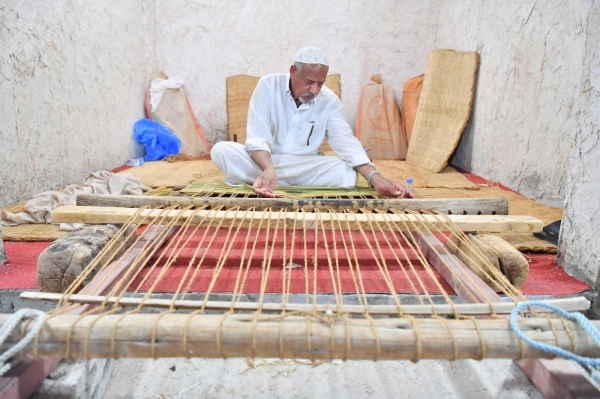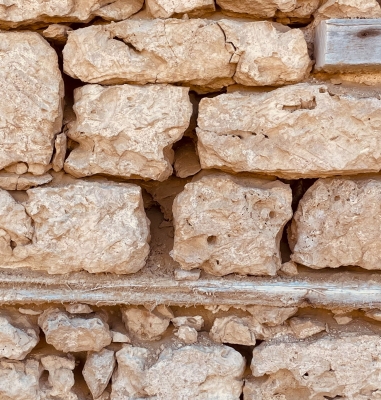
Al-Hassir is a mat woven from palm fronds in various sizes and shapes. It was historically used in the Kingdom of Saudi Arabia to cover floors and decorate homes. Nowadays, it is considered a traditional furnishing that is part of the culture and heritage of most regions of the Kingdom. Its production was prevalent in regions where palm trees were cultivated, as al-Hassir makers required palm wicker.
Al-Hassir manufacturing
Al-Hassir is made from a delicate palm leaf fabric, intricately woven according to the desired length and width of the maker or requester. Once the weaving is done, the edges are carefully folded and stitched with a rope to secure and prevent unraveling. The ropes used in al-Hassir were locally made from fibers and wires.
Uses of al-Hassir
Al-Hassir was widely used due to its availability, ease of cleaning off debris, and affordable price. Its uses included:
Covering the floors of homes, mosques, and roads for decoration and seating; and using it as a surface for drying grains and dates by spreading them out on al-Hassir. Al-Hassir is used to make prayer rugs, enhanced with colorful fabric threads or woven wicker. Al-Hassir also provides insulation against the ground's heat and chill. They are placed under carpets to safeguard them from damage.
A circular al-Hassir, akin to modern trays, serves as a platform for food placement. It is used to make baskets or, historically termed, 'al-Qafaf' for carrying items and goods. Similarly, it was used to make 'al-Waqr', resting on the backs of livestock for transporting items like fertilizer.
Al-Hassir and construction
Al-Hassir served various purposes, particularly in ancient times when it was used in phases of construction of mud and stone houses. Once houses were roofed and palm leaves nestled between pillars, al-Hassir were laid atop for covering. Al-Hassir were dyed to preference for decorative flair or left in their natural hue.
Al-Hassir production
Al-Hassir was considered a household industry predominantly practiced by women, though some men also specialized in this craft. Women also produced other tools like brooms made from palm fronds for various uses.
Related quizzes


